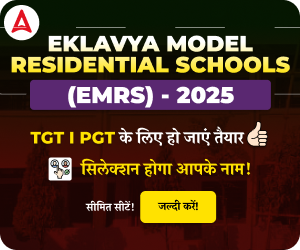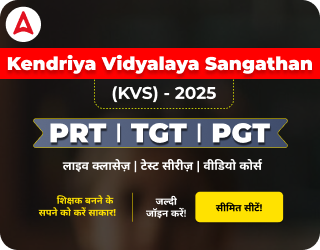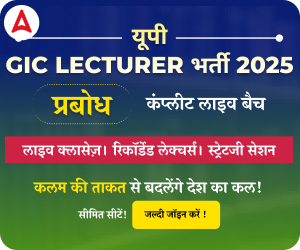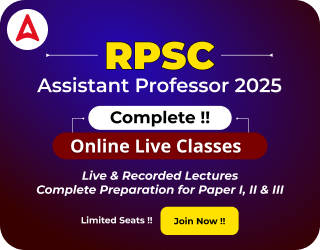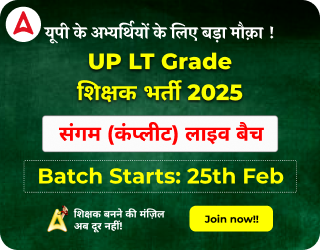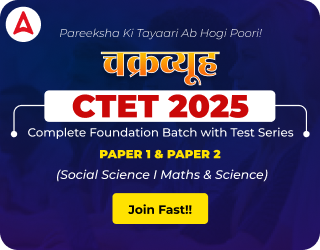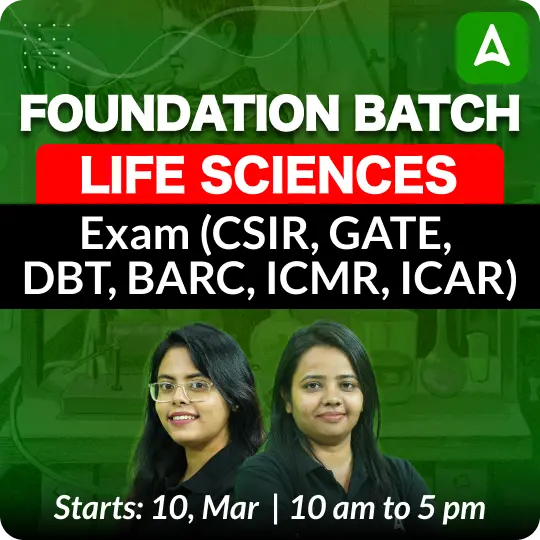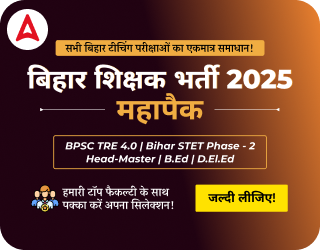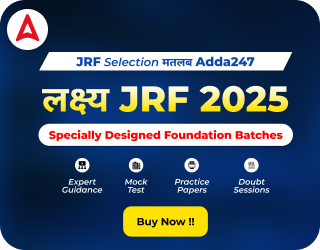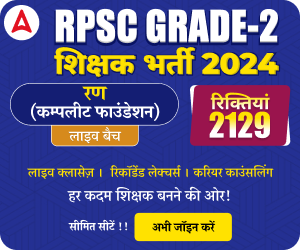Table of Contents
The Railway Recruitment Board is on its way to conducting the RRB Railway Teaching exam to recruit candidates for various teaching positions in multiple disciplines. Candidates who wish to clear the initial 100 marks Computer Based Test (CBT), and move forward in the selection process, need to master the teaching aptitude section. This section is common in exams for all disciplines. But to prepare for this section candidates need to invest their time and focus on this section. To facilitate the aspirants, we have drafted these RRB Teacher Teaching Aptitude Questions with their detailed solutions with the help of our subject matter experts. Candidates can practice these questions to understand exam scenarios firsthand and perform well in the section.
RRB Teacher Teaching Aptitude Questions With Detailed Solutions
These question sets will help you understand the exam environment, giving you a thorough understanding of the types of questions you should expect and how to approach them strategically. By practising these RRB Teacher Teaching Aptitude Questions, candidates can enhance their problem-solving skills, improve accuracy, and develop confidence in tackling different scenarios.
The teaching aptitude section evaluates a candidate’s teaching methods, classroom management skills, student psychology, and evaluation techniques. Regular practice with these questions will strengthen conceptual clarity, boost efficiency, and refine time management skills, ensuring candidates perform their best in the RRB Railway Teacher Exam.
RRB Teacher Teaching Aptitude Questions
To help candidates prepare effectively, we have compiled a set of 30 RRB Teacher Teaching Aptitude Questions with detailed solutions. Here, we are providing 10 questions to give you a quick understanding of the exam pattern, difficulty level, and types of questions asked in the exam. These questions will help you assess your conceptual clarity, time management, and problem-solving skills, ensuring you are well-prepared for the teaching aptitude section. Practising these will boost confidence and help you identify important topics that require more attention.
Q1. In progressive education, society is considered as:
(a) Separate from school
(b) Classroom
(c) Extension of classroom
(d) Country
Q2. According to the RTE Act 2009, all private schools in a neighborhood are required to enroll ______ students from the disadvantaged or weaker section of society and provide free education to them.
(a) 20%
(b) 21%
(c) 25%
(d) 30%
Q3. To create a language-rich environment in class, a teacher should:
(a) Establish a language school
(b) Establish a language lab in the school
(c) Provide an opportunity where the language is seen, noticed, and used by children.
(d) Ask children to use only Hindi while communicating in the class with peers
Q4. Inclusion in schools primarily focuses on-
(a) making subtle provisions for special-category children
(b) fulfilling the needs of children with disabilities
(c) meeting the need of the disabled child at the expense of the entire class
(d) including the educational needs of illiterate parents in school
Q5. The rationale behind inclusive education is that
(a) Society is heterogeneous and schools need to be inclusive to cater to a heterogeneous society.
(b) the benchmarks for the performance of each child should be uniform and standardized
(c) we need to take pity on special children and provide them access to facilities
(d) it is not cost-effective to provide separate schools for special children
Q6. Which of the following is correct in the context of the socialization of children?
(a) Peers are primary socialization agents and family is a secondary socialization agent.
(b) Family and mass media both are secondary socialization agents.
(c) School is a secondary socialization agent and family is a primary socialization agent.
(d) School is a primary socialization agent and peers are secondary socialization agents.
Q7. Which of the following is not a principle of inclusive education?
(a) No discrimination against students
(b) School adapts to the need of students
(c) Equal educational opportunity for all
(d) social discrimination
Q8. Which of the following is an example of an effective school practice?
(a) Corporal punishment
(b) Competitive classroom
(c) Individual learning
(d)Constant comparative education
Q9. Counseling is a process of
(a) Allocation of a round peg in round holes and square pegs in square holes
(b) Orientation of pupils toward the social expectation
(c) Helping students towards self-direction
(d) Diagnosis and prescription
Q10. The Right to Education Act, of 2009 prescribes minimum working hours per week for a teacher-
(a) Forty hours
(b) Forty five hours
(c) Fifty hours
(d) Fifty five hours
Solutions
S1. Ans.(c)
S2. Ans.(c)
S3. Ans.(c)
S4. Ans.(a)
S5. Ans.(a)
S6. Ans.(c)
S7. Ans.(d)
S8. Ans.(c)
S9. Ans.(c)
S10. Ans.(b)
Download RRB Teacher Teaching Aptitude Questions With Detailed Solutions PDF
Here, we are providing two sets of Teaching Aptitude Questions to help candidates prepare effectively. The first set is designed for all teaching positions, covering essential concepts applicable to TGT, PGT, and PRT exams. The second set is specifically curated for Primary Teacher (PRT) positions, focusing on foundational teaching methodologies and child pedagogy. Download the PDFs below to enhance your preparation.
| Download RRB Teacher Teaching Aptitude Questions With Detailed Solutions PDF | |
| RRB Teacher Teaching Aptitude Question Sets | Download Links |
| RRB Teacher Teaching Aptitude Question Set 1 (for Primary Teachers) | Download PDF |
| RRB Teacher Teaching Aptitude Question Set 2 (for All Posts) | Download PDF |

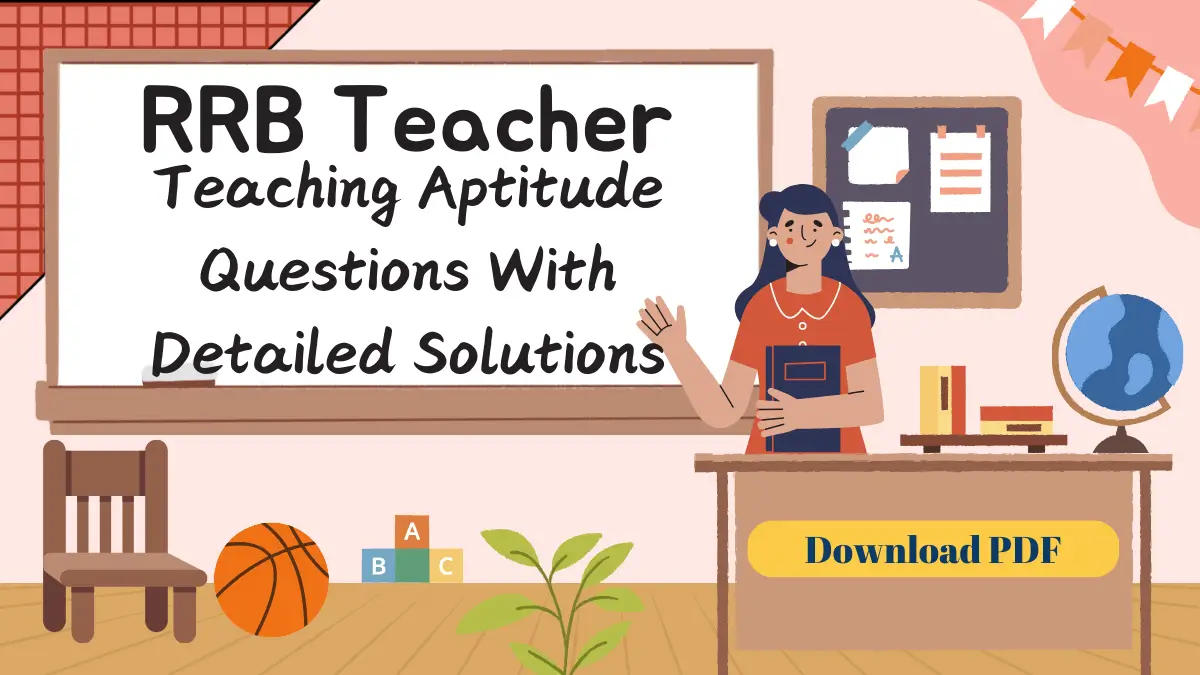


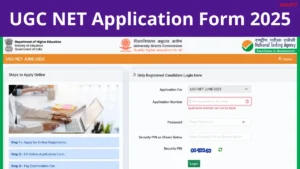 UGC NET Application Form 2025 Starts for...
UGC NET Application Form 2025 Starts for...
 Can DELED Qualified Candidates Apply for...
Can DELED Qualified Candidates Apply for...
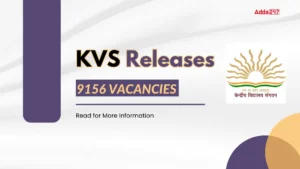 KVS Recruitment 2025 Out, Check Kendriya...
KVS Recruitment 2025 Out, Check Kendriya...
